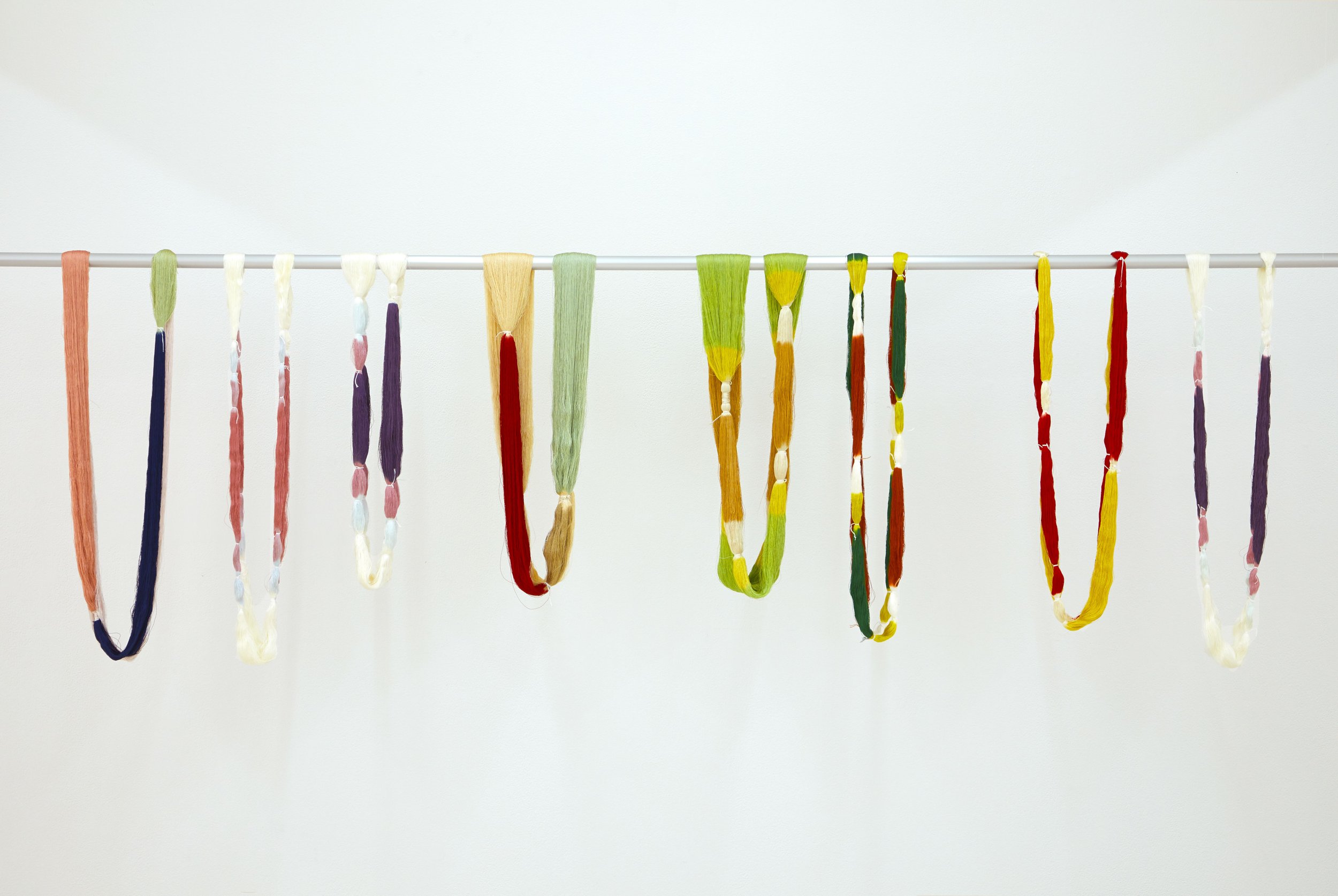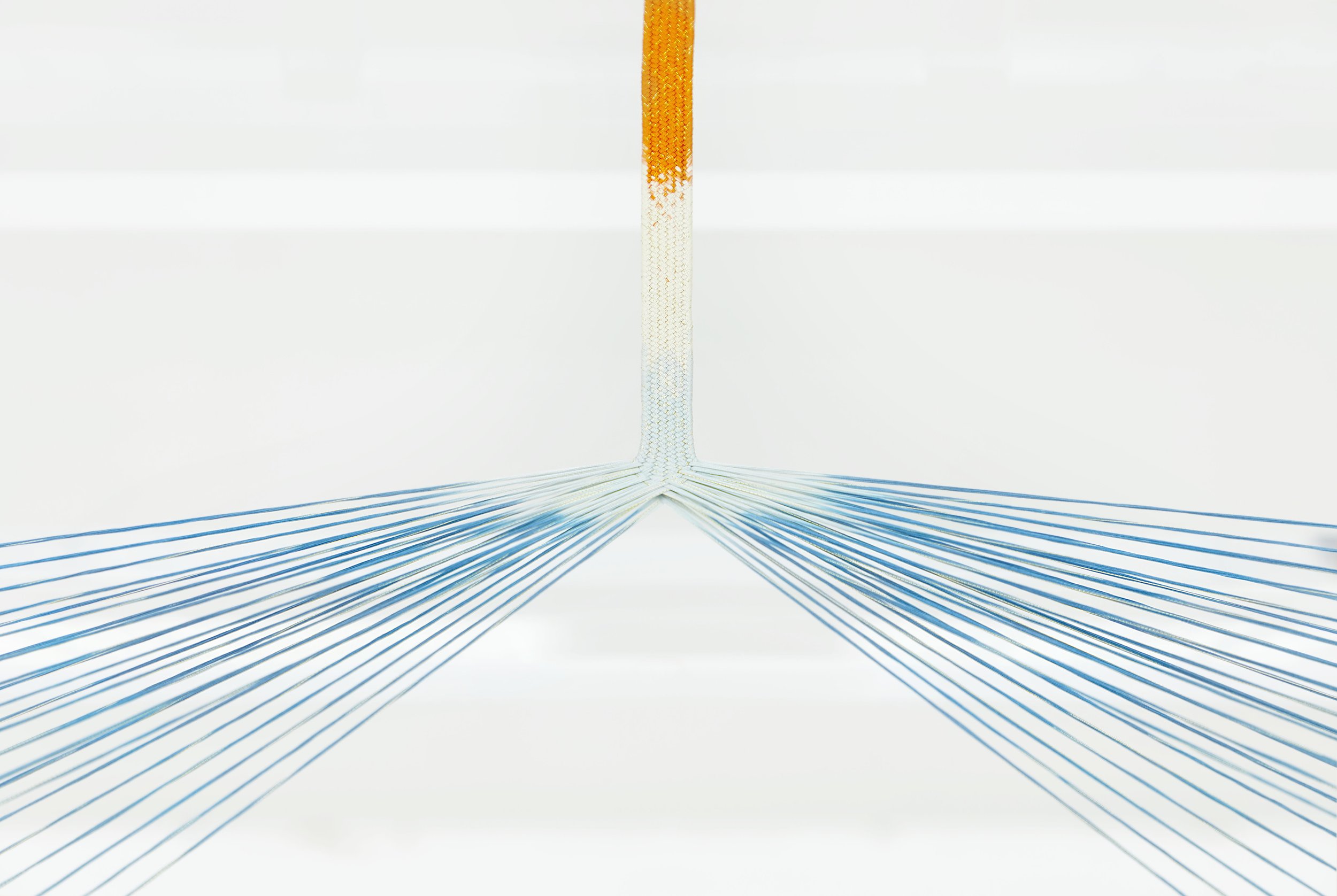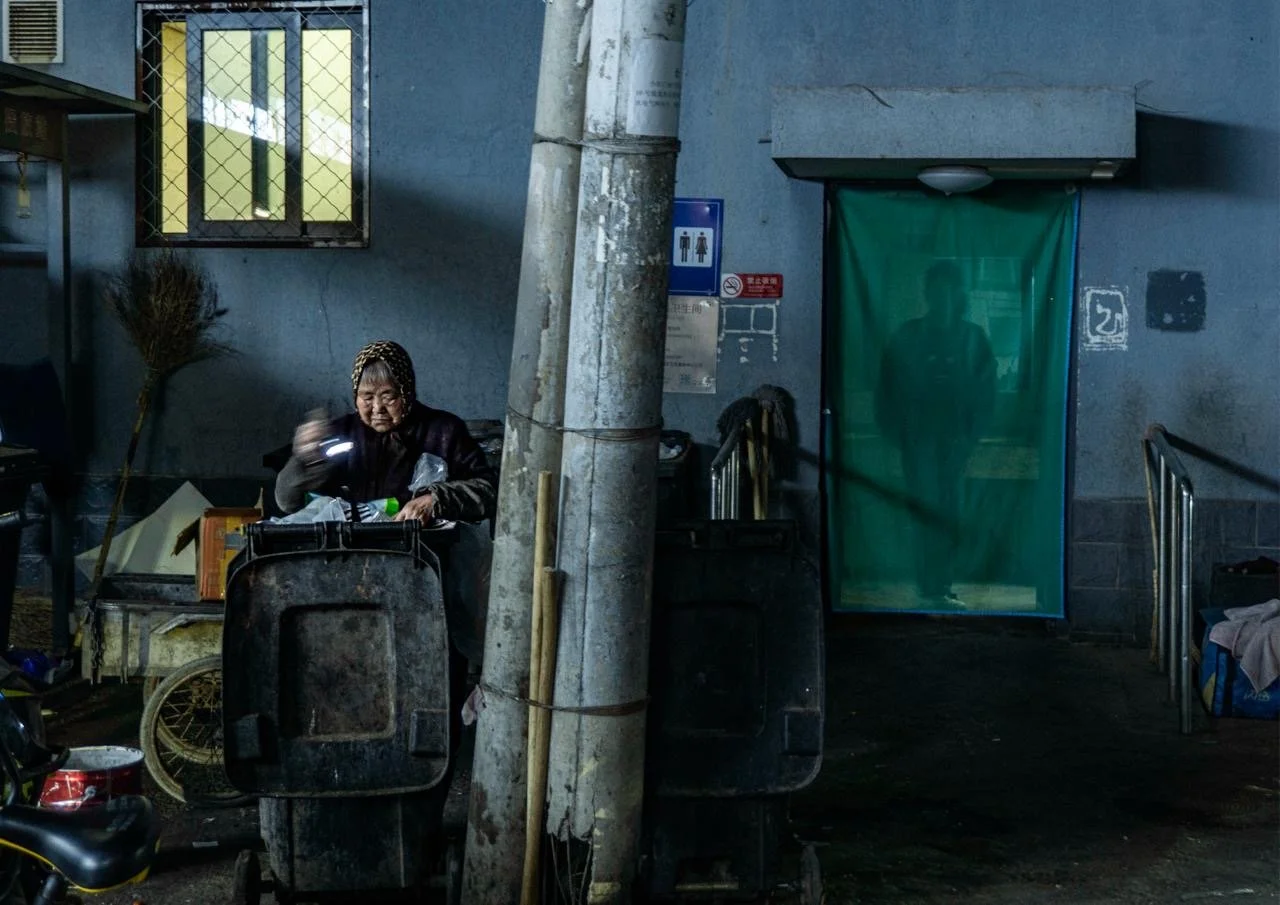An exhibition exploring the traditional Japanese artform of kumihimo will be coming to Japan House London in February 2023
From the linking of samurai armour to the finishing touch of a kimono, the exhibition explores the wide-ranging uses ofkumihimo, bringing us up to date with applications such as contemporary fashion and three-dimensional structures, while asking the question ‘what next?’.
Image: Dyeing threads by Yasuhide Kuge
Japan House London presents KUMIHIMO: Japanese Silk Braiding by Domyo, the UK’s first major exploration of this ancient yet contemporary Japanese art. Drawing together the strands of its fascinating 1300-year history, the exhibition also considers kumhimo’s vibrant current applications, from formal and contemporary fashion to science and engineering. The future of kumihimo is posed as an open question, asking the visitor to join in with the discussion on possibilities and potential.
Image: Blue white and yellow braid by Yasuhide Kuge
Literally translating as ‘joining threads together’, kumihimo refers to braided cord from Japan. It is characterised by vivid colours and intricate patterns, and is created by expert craftspeople who combine up to 140 hand-dyed threads, often made of silk. The exhibition at Japan House London is produced by Yusoku Kumihimo Dōmyō (Domyo), a company located in the old shopping and entertainment district of Ueno in central Tokyo, which has been making braided silk cords by hand since 1652.
Kumihimo’s history is one of transfer of material culture. In 710 CE, Nara became Japan’s imperial capital, its location at the end of the Silk Roads positioning it as a point where Central Asian, Chinese, Korean and Japanese influences would converge. Silk braiding in Japan at the time was inspired by patterns and colours from the Asian continent. In the 9th century, braided silk cords were used in clothing worn by aristocrats, for binding and hanging scrolls and as religious decoration in temples and shrines. Designs evolved and took on a uniquely Japanese character, becoming more complex and sophisticated in the process.
From around the 10th century, it was the samurai classes who continued the tradition, using kumihimo to join together armour plating and as decorative ties for the scabbards of their swords. Today, however, many people in Japan will know kumihimofrom its use as obijime – colourful cords which are tied on top of the sash, known as an obi, of a woman’s kimono. Less well known, either in Japan or abroad, are the contemporary applications of kumihimo, such as aircraft components, golf clubs and artificial limbs.
KUMIHIMO brings the story of Japanese braiding to life with floor-to-ceiling installations, absorbing videos, presentations of tools and processes and more than 50 different examples of the braids themselves, imaginatively presented throughout the gallery. These examples include cords made using historical designs, the originals of which are held in Buddhist temples and Shinto shrines as well as the Shōsōin Repository in Nara and are rarely, if ever, publicly displayed. The exhibition is complemented by a rich programme of events, including hands-on workshops which allow guests to try making kumihimo themselves.
Location: Japan House London, 101-111 Kensington High Street, W8 5SA. Date: 23 February – June 2023 .Price: Free


















